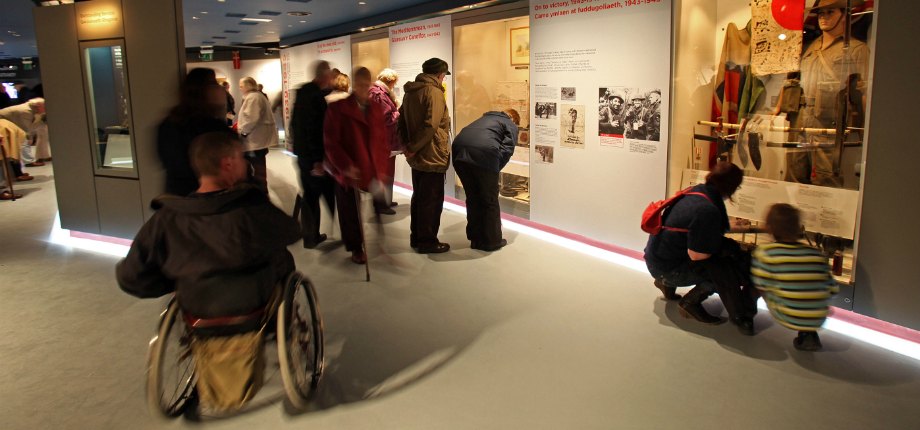Stay in touch with the latest news from AIM and get information on sector grants, jobs and events with our free fortnightly E-News.
Firing Line Museum of the Welsh Soldier: Visitor Focus

Supported by a Hallmarks Award, Firing Line Museum of the Welsh Soldier undertook research to enable them to understand their visitors and non-visitors better, and to explore ways of building new audiences.
The museum sits within Cardiff Castle, run by the local authority, which had made it difficult to gather data on visitors in the past.
“People coming to us pay admission to the Castle and then just come to us as part of their ticket price. We realised that we weren’t understanding who our audiences were because that data was only being captured by the Castle,” says Rachel Silverson, the museum’s curator. “We needed to know who was using us and what sort of feedback they gave the museum.”
Rachel worked with the Castle staff to separate out the Firing Line Museum’s visitor numbers.
“Every month, we looked at what their visitor numbers are and what our visitor numbers are. It quickly became apparent that, even though we are part of the Castle ticket, on average only about 30% of the people paying to see the Castle were coming down to us.”
The museum commissioned Cardiff Research Centre to analyse in detail the visitors who were making it through their doors.
Rachel says: “One of the key areas noticeable was that most of our audience comes from tourism rather than locally, so we were struggling to get repeat visits. There was also limited capacity to reach out to the wider groups who perhaps couldn’t afford to use us.”
In the second strand of the project, the museum put grant money towards exploring ways to work with different groups who may not have been able to afford to visit the museum otherwise, including those under the umbrella of the Welsh government’s Fusion: Tackling Poverty through Culture programme.
Using the Hallmarks grant meant they could offer sessions for scouts, cadets and with groups who were part of the Fusion programme at a discount or for free, bringing a new wave of people into the museum.
Rachel says: “From the perspective of an independent museum, sometimes it’s not so easy to link in with programmes like Fusion and its Pioneer programme because it tends to be targeted at national and local authority institutions. The great thing about the grant is that it’s really opened the door and given us the opportunity to get involved and show that we’ve got things that we can offer to the programme as well.
“For some of those who have come, it has been their first visit to a museum like ours and sometimes it’s their first time visiting a museum.”
They are already seeing repeat bookings from the groups and the team has plans to use the research report to help widen its advocacy work and develop other ways to attract new users, including working with the data and advocacy officer at the Wales and West military museum regional network.
“But we’ve already broadened our audience and users just with the small amount of time and money that we’ve had from Hallmark,” Rachel adds. “It’s been a great opportunity and has enabled us to prioritise how we view our visitors and the meaning that they have for the work that we do.”
